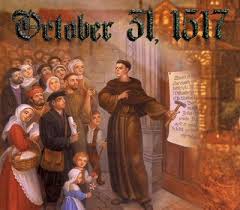I have being saying for a while that our trouble as a church, at least the Lutheran Church Missouri Synod is that we still preach Law and Gospel and we still proclaim that Christ is the Savior. Hard to get attention when we preach a Savior from Sin and Sin has pretty much been defined, educated, politicized, and corrected away. In fact the only real sin left is to call someone a sinner.
Young people have a strange understanding of religious faith as “a positive good, but one with little influence over their decision-making. For this generation, religious faith (and in particular Christianity given its prevalence in the American context) points to a banal sense of God’s desire for us to be nice to one another and pursue personal happiness.”
- A god exists who created and orders the world and watches over life on earth.
- God wants people to be good, nice, and fair to each other, as taught in the Bible and by most world religions.
- The central goal of life is to be happy and to feel good about oneself.
- God is not involved in my life except when I need God to resolve a problem.
- Good people go to heaven when they die.1
Luther’s Reformation started with a quest for a merciful God. Luther’s consciousness of sin was so severe that it almost destroyed him (which the consciousness of sin is actually meant to do). It is the consciousness of sin that leads folks to the Gospel of a forgiveness won by Christ’s sacrificial death and glorious resurrection.
A Reformation today has to overcome above all else #’s 2 and 3. A quick look at Jesus sermon on the Mount will disabuse most people of a desire to be a Christian. At the other end of the spectrum is what we are seeing around the world with young people leaving home and family to be not nice, not good and not fair to others and whose sole goal in life is to force others to obey their God.
1.Kenda Creasy Dean, Almost Christian: What the Faith of Our Teenagers Is Telling the American Church (New York; Oxford: Oxford University Press, 2010), 14


